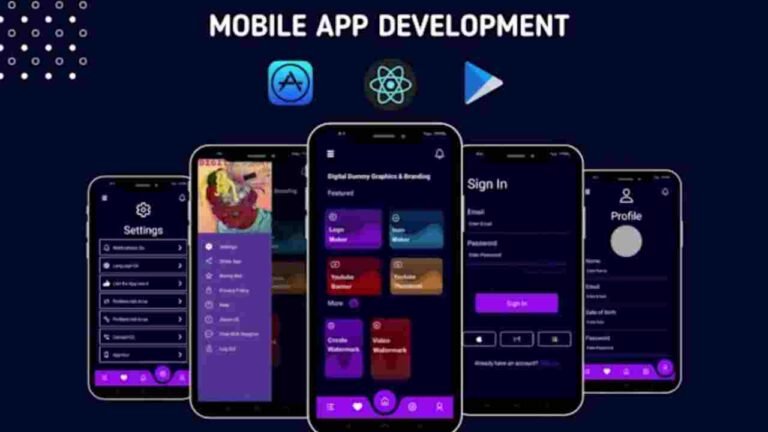Creating a mobile app is an exciting achievement, but the launch phase is when your hard work truly comes to life. Whether you’ve developed an app for iOS or Android, launching it effectively is crucial to its success. A well-planned and executed app launch can drive user engagement, downloads, and long-term success, while a rushed or poorly planned launch can lead to low user adoption, negative reviews, and a wasted investment.
This article provides a comprehensive, step-by-step guide on how to launch your mobile app. From preparing your app for release to marketing it to a global audience, we’ll walk you through each stage of the launch process to help ensure a successful app debut.
1. Pre-Launch Preparation
Before officially releasing your app, it’s essential to set up a strong foundation. This includes refining your app’s core features, preparing for testing, and planning your marketing strategy.
1.1. Finalize Your App’s Core Features
Ensure that your app’s core features are fully functional and ready for launch. Conduct thorough testing to check for bugs, performance issues, and usability problems. Make sure that all features work as intended and meet the requirements outlined in your initial planning phase.
- Checklist:
- Review all features against the original app plan.
- Test core functionality on different devices and operating systems.
- Conduct thorough usability testing to ensure smooth user experience.
1.2. Perform Beta Testing
Beta testing is essential for gathering real-world feedback on your app’s performance, functionality, and usability. Use beta testers from your target audience to identify issues that internal testing may have missed.
- How to Conduct Beta Testing:
- Use tools like TestFlight (for iOS) or Google Play Console (for Android) to distribute beta versions.
- Collect feedback through surveys, user reviews, and direct communication.
- Fix bugs and make necessary improvements based on feedback before the official release.
1.3. Plan Your App’s Marketing Strategy
Begin your marketing efforts well before the official launch. Creating a pre-launch marketing plan can build anticipation and excitement around your app.
- Key Marketing Steps:
- Create a landing page: This should include app details, features, and a call-to-action (CTA) to sign up for launch updates.
- Leverage social media: Start promoting your app on platforms like Facebook, Instagram, Twitter, and LinkedIn.
- Engage influencers: Reach out to industry influencers or bloggers who can help build credibility and awareness.
- Set up an email list: Build an email list of potential users and send them updates and exclusive offers related to your app.
2. Optimize Your App Store Listings
To ensure your app is discoverable and appealing to users, it’s crucial to optimize your app store listings. App store optimization (ASO) can significantly impact how easily people find your app in the Apple App Store or Google Play Store.
2.1. Write a Compelling App Description
Your app’s description should clearly explain what your app does, its key features, and how it solves users’ problems. Keep it concise but informative.
- Key Elements to Include:
- A catchy headline that captures attention.
- A brief overview of the app’s core functionality.
- Key features and benefits.
- User testimonials or reviews (if available).
2.2. Optimize Keywords
Like SEO for websites, App Store Optimization (ASO) involves using the right keywords in your app description, title, and tags. Research the most popular and relevant search terms related to your app.
- Tools for Keyword Research: Use tools like Sensor Tower, App Annie, and Google Trends to discover high-volume, relevant keywords.
- Where to Use Keywords: Incorporate keywords in your app title, description, screenshots, and promotional text.
2.3. Upload High-Quality Screenshots and Videos
Visual assets like screenshots and app preview videos are the first things users see when browsing the app store, so make them count. Show off your app’s interface, functionality, and any standout features.
- Tips for Visual Assets:
- Use high-quality images that showcase your app’s interface in action.
- Create a short video demonstrating key features and user experience.
- Focus on clarity—show users exactly what they can expect from your app.
3. App Store Submission Process
Once your app is ready for launch, it’s time to submit it to the app stores. The submission process differs slightly between iOS and Android, so let’s break it down.
3.1. iOS App Submission
For iOS apps, submission happens through App Store Connect, Apple’s platform for managing app distribution.
- Steps to Submit:
- Create an App Store Connect account.
- Upload your app using Xcode or Transporter (Apple’s tool for uploading large files).
- Fill in app details such as description, keywords, screenshots, and pricing.
- Submit your app for Apple’s review. Apple reviews apps for compliance with guidelines, functionality, and security.
3.2. Android App Submission
For Android apps, submission happens through the Google Play Console.
- Steps to Submit:
- Create a Google Play Developer account.
- Upload your app’s APK or AAB (Android App Bundle) file.
- Complete app details such as description, screenshots, pricing, and rating.
- Submit your app for Google’s review. Google reviews apps for functionality, security, and content.
4. Post-Launch Activities
The work doesn’t stop once your app is live on the app stores. Post-launch activities are essential for ensuring that your app continues to grow, gain users, and provide value.
4.1. Monitor User Feedback
Once your app is launched, monitor user feedback regularly. User reviews on the app store can provide valuable insights into bugs, performance issues, and areas for improvement.
- How to Respond to Feedback:
- Address negative reviews quickly by apologizing for any issues and offering solutions.
- Use feedback to guide future app updates and improvements.
4.2. Monitor App Performance
Use analytics tools like Google Analytics, Firebase, or Mixpanel to track user engagement, behavior, and app performance. This data will help you understand how users are interacting with your app and identify areas that need attention.
- Key Metrics to Track:
- Daily active users (DAU) and monthly active users (MAU).
- Retention rate: How many users continue using the app over time.
- Crash reports: Monitor app crashes and fix bugs quickly.
4.3. Update and Improve the App
Post-launch updates are critical for keeping your app relevant and functioning smoothly. Regularly release updates that fix bugs, improve performance, and add new features.
- How to Plan Updates:
- Address bugs and technical issues promptly.
- Add new features based on user feedback and market trends.
- Optimize app performance to ensure fast loading times and smooth functionality.
5. App Marketing and User Acquisition
Even after the app is launched, ongoing marketing efforts are necessary to ensure it reaches the right audience. A comprehensive marketing strategy is key to attracting users, gaining traction, and ensuring long-term success.
5.1. Social Media Marketing
Promote your app on social media platforms like Facebook, Instagram, Twitter, and LinkedIn. Share updates, behind-the-scenes content, and success stories to engage your audience and encourage them to download the app.
5.2. Influencer Partnerships
Partner with influencers or bloggers in your niche to promote your app. Influencers can provide access to a wider audience and help increase credibility and trust.
5.3. Paid Advertising
Consider running paid ad campaigns on platforms like Google Ads, Facebook Ads, or Instagram Ads to drive downloads and increase brand awareness. Focus on targeted advertising to reach users who are likely to engage with your app.
6. Conclusion
Launching a mobile app is an exciting journey, but it requires careful planning, testing, marketing, and ongoing maintenance to ensure success. By following the steps outlined in this guide—from pre-launch preparation and app store optimization to post-launch marketing and updates—you can set your app up for a successful launch and continued growth.
Remember, launching your app is just the beginning. Regular updates, user engagement, and marketing are key to keeping your app relevant and competitive in the app stores.

